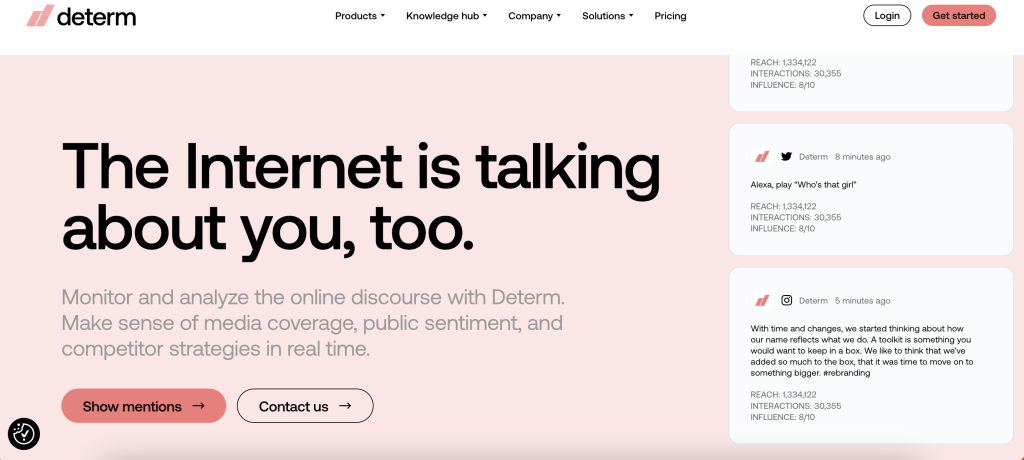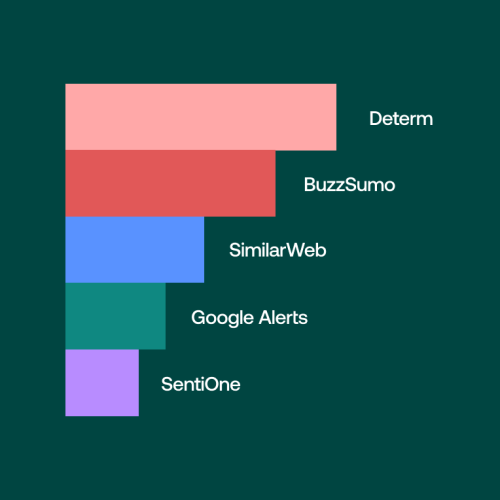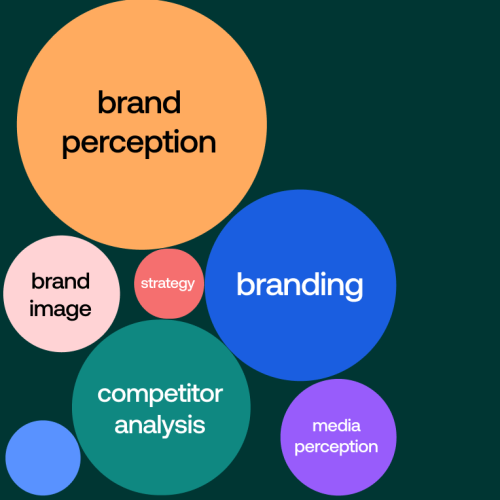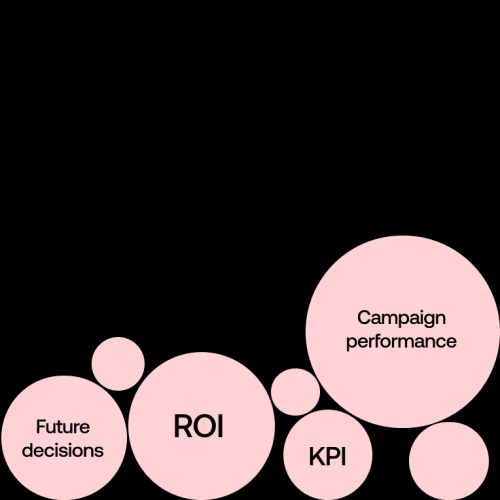As much as 63% of a company’s market value is directly tied to its reputation. It’s undeniable that reputation affects the bottom line of every business—including yours—but how do you define and measure such an intangible, fragile thing?
Brand reputation refers to the public’s perception of a company or organization. Put another way, your reputation is a culmination of conversations about your brand that happen when you are not in the room.
? Read Brand Reputation 101: Monitoring, Analysis, and Management Tools
These conversations, happening in rooms you may not even be aware of, can have a huge impact on a company’s growth. The problem is that unless they’re directly tagged, many brands won’t be aware of the reputation they’re building up online.
This is why online reputation management (ORM) is so important. ORM is the practice of engaging with the people who interact with your company online—be it through commenting on social media pages, using search engines to find you, or rating and reviewing products and services.
Successful reputation analysis involves tracking mentions, being aware of how your brand is perceived, and then harnessing the power of these online conversations to reinforce your brand promise. This reputation analysis guide will help you get started.
Why Do I Need to Perform a Brand Reputation Analysis
With the rise of Google, Facebook, Twitter, and review sites, corporate websites and marketing teams no longer dominate the conversation about their own brands. The balance of power has shifted toward User Generated Content (UGC) such as star ratings, social media content, and reviews (either review sites or search engine reviews). Businesses need to adapt via new strategies and tools.
Read 3 Reasons Why You Should Do Brand Tracking
So, how exactly do you benefit from a brand reputation analysis?
Gain a competitive edge
You need to know how your brand is perceived and what your audience responds to. Then, you can begin sketching outgrowth perspectives to stand out from the rest of the market.
Read How to Use Media Monitoring for Competition Analysis
Build up loyal customers
With a good reputation, you can become your audiences’ go-to brand. Listening, taking on feedback, and adapting to meet their needs cultivates advocacy and loyalty. These dedicated customers can act as brand ambassadors, sharing their positive experiences via word-of-mouth.
Ensure higher sales/increased income
These positive relationships with consumers ultimately drive up sales and revenue. According to Prophet’s 2020 Brand Relevance Index, the brands with the very best reputations outperformed the S&P 500 average revenue growth by 230%.
Retain employees
Maintaining high levels of employee engagement is important to keep employees happy. Though workers are also more likely to want to associate with a reputable business that is known for being a desirable employer.
Now you know why being aware of your brand’s image is important, but measuring something as subjective as reputation can be tricky. You need to find a way to put it into numbers, while still taking into consideration the feelings and human factors underpinning the data.
So, the first part of this reputation analysis guide is about looking at ways to monitor your reputation. You’ll find below a list of tips to help you do just that.
Monitoring Tips
Automate brand reputation monitoring
Trawling through mentions in real time will get you nowhere. Even if individuals could track millions of online sources in multiple languages, it would be a time-consuming ordeal. Opt for brand management tools that automate the process in order to illuminate the bigger picture, while providing invaluable insights into the specifics.
Read 7 Benefits of Online Reputation Monitoring
Use real-time alerts
You need to find out what is damaging your brand reputation as quickly as possible—nothing is as embarrassing as failing to notice a scandal until it’s too late.
Media monitoring tool Determ gives you the opportunity to set up 2 kinds of alerts – Smart and Spike alerts. Smart alerts are notifications you receive for every mention of a specific keyword that matches specific filter criteria. Spike alerts are notifications when there is an increase in the amount of mentions for a specific topic.
Read Small Business Reputation 101: Tips and Tools for Success
Respond to reviews
On a smaller scale, it’s nice to be able to take advantage of positive attention by engaging and resharing. In the case of negative reviews, you want to be informed and able to respond (ideally within 48 hours) so that the review is not left to fester or even go viral. Handling reviews well is crucial to maintaining a good reputation, owning up to mistakes, and winning over customers, with transparency and trust.
Read 7 Ways Content Marketing Can Help You Recover Your Brand’s Reputation
Identify primary sources where talk happens
If you want to know what people are saying about your brand, you need to first identify where these conversations might be happening. The sources chart in most brand analysis software will show you your mentions and the share of each source.
It’s good to know your customers behaviours and preferred sites. For example, if most of your customers use Youtube and social media more than they watch TV, it would be pointless to focus your marketing efforts on TV adverts.
Don’t overlook sources—your users certainly won’t. For example, people working from home using Microsoft teams on phone devices might take to r/MicrosoftTeams on Reddit to troubleshoot, vent frustrations, and share jokes. Make sure that you’re informed, regardless of the channels your customers use to communicate with each other.
Read A Newbie’s Guide to SEO Reputation Management
Implement social listening
Social listening is about analyzing trends and conversations—not only in relation to your brand, but to the industry as a whole. Before you make important marketing decisions, you want to figure out who your audience is, what they’re passionate enough about to discuss online, what they’re looking for, and how you can best connect with them.
It’s not just about collecting information, but also understanding the context behind the data. What was the context of statements? What was the impact? Be proactive in interrogating trends and patterns in order to deepen your understanding.
As you’ll know, understanding your target audience is a must. Take it further by segmenting customers by criteria, such as with a business contacts database that helps to personalize the customer experience for different types of users.
Social listening generates a large amount of data that can be structured and unstructured, quantifiable and non-quantifiable. The next step is to analyze the data; we cover this in detail in the next section.
Read Complete Guide to Social Listening: Proven Hacks, Strategies, and Tools
Brand Reputation Metrics
Once you’ve got brand reputation monitoring down, move on to analyzing this data to identify what’s working and what is not. There are a few key metrics to keep in mind as you do so.
In isolation, none of these metrics can measure every aspect of customer sentiment across all platforms and touchpoints of the customer journey. That’s why a unified platform is so useful: you can look at all the data that makes up brand reputation from one dashboard.
Before deciding on a new Customer Relationship Management provider, familiarize yourself with the functional requirements for CRM. As we run through the key metrics below, we will be using examples from the reports section on Determ.

Brand mentions over time
Usually expressed as a chart showing whether mentions of your brand are peaking, decreasing, or remaining constant, brand mentions over time is an essential metric to track. It helps you to identify the groups of people influencing your reputation the most, and to better understand your brand’s popularity over time.
Reputation is not a static thing. In fact, many customers will not scroll back to read reviews older than a few months old. You need to be constantly on the ball, tracking your mentions.
If your chart shows an increase, you can look into the underlying drivers and see whether this traffic is positive or negative, and then act accordingly. You don’t want to be in a situation where brand mentions peaked over a controversy, and no one at your company realized fast enough to act.
Read How to Efficiently Track Mentions Online
Sentiment analysis
It’s easy to fall into a trap of focusing solely on numbers and assuming that a high number of mentions means that your brand is doing well. There are obvious problems with this.
For example, if someone tweeted: “Don’t you love when you want to watch a movie on Amazon Prime and it’s not on there anymore”—this person is not saying that they love Amazon Prime.
While the above contains the word ‘love’ in the same sentence as ‘Amazon’, counting this as a win is inaccurate, as you need to take into account for tone and sarcasm in reviews.

This is why sentiment analysis is essential. It uses AI to detect tone, set a frame of reference for your data, and help you to delve deeper into the true feelings and attitudes underpinning your online mentions. Simply counting them is not enough—especially when you consider how many might not be positive.
Read Top 5 Examples of Sentiment Analysis
Share of voice
Share of voice (SOV) measures how much of the market you cover with your brand compared to competitors. In terms of reputational analysis, it is an indicator of visibility. How much do you dominate the conversation in your industry?
SOV is different from Mentions Over Time, as the latter does not reflect where you stand in relation to the competition.
By understanding your SOV, you gain more insight both into your current position and how you might achieve further growth from there.
Final Thoughts
By taking on the above advice, you can not only track your brand’s visibility online, but delve deeply into the attitudes and beliefs held about your business by the public. Analyzing the data you collected by looking at SOV, brand sentiment, mentions over time, and more will allow you to mine your feedback for actionable insights. Only by knowing where you stand in the eyes of your customers can you improve.
John Allen is a driven marketing professional with over 14 years of experience, an extensive background in building and optimizing digital marketing programs across SEM, SEO, paid media, mobile, social, and email, with an eye to new customer acquisition and increasing revenue






